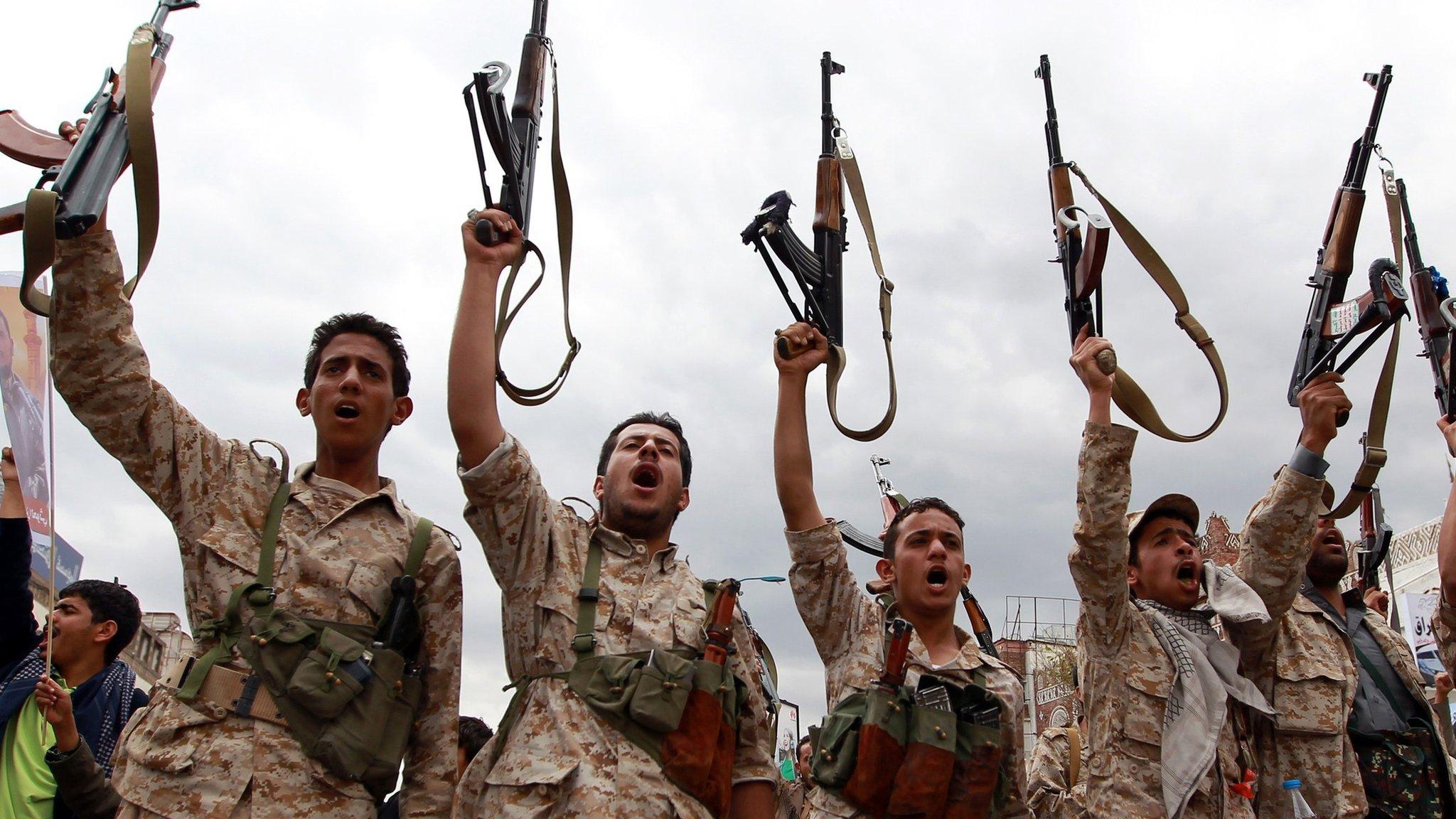No end in sight to war in Yemen
- Published
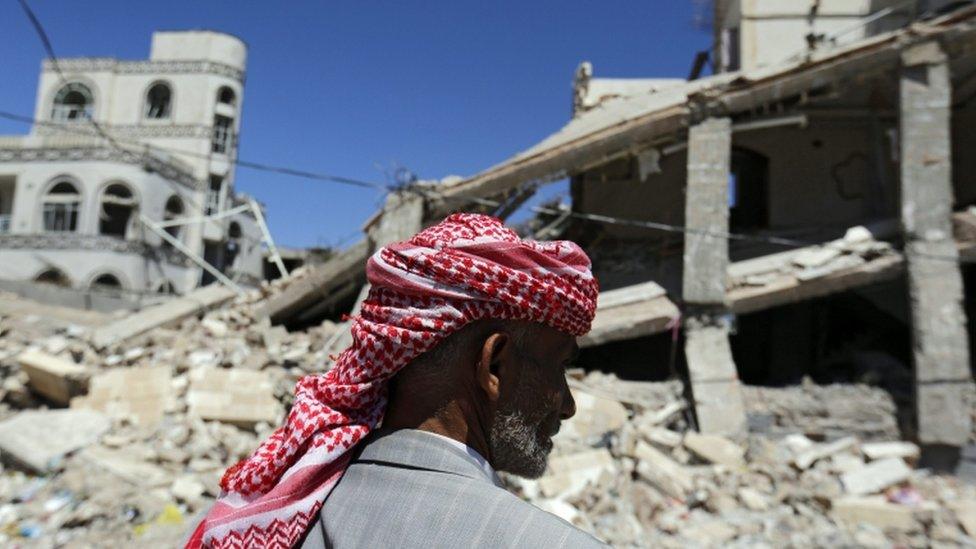
Both sides have been accused of firing weapons into civilian areas
One of the world's deadliest - yet least reported - conflicts is marking its first anniversary.
Saturday marks one year since a Saudi-led coalition of Arab air forces began carrying out airstrikes on rebel forces in Yemen.
In the space of those 12 months, the UN High Commissioner for Human Rights estimates, external, at least 3,200 civilians have been killed and 5,700 wounded, with 60% of the casualties inflicted by air strikes.
Talks have been under way in Riyadh to find an end to the war.
But even if it stopped tomorrow and did not resume, Yemen today is a shattered country with chronic problems and a traumatised population in need of aid for years to come.
So how did it start, who is fighting whom, and how could it end?
The conflict began six months before the air strikes, in September 2014.
Houthi rebels, angered by what they saw as a corrupt and discriminatory government, marched down from their mountain base in the north, seized the capital, Sanaa, and placed the UN-recognised President Abdrabbuh Mansour Hadi under house arrest.
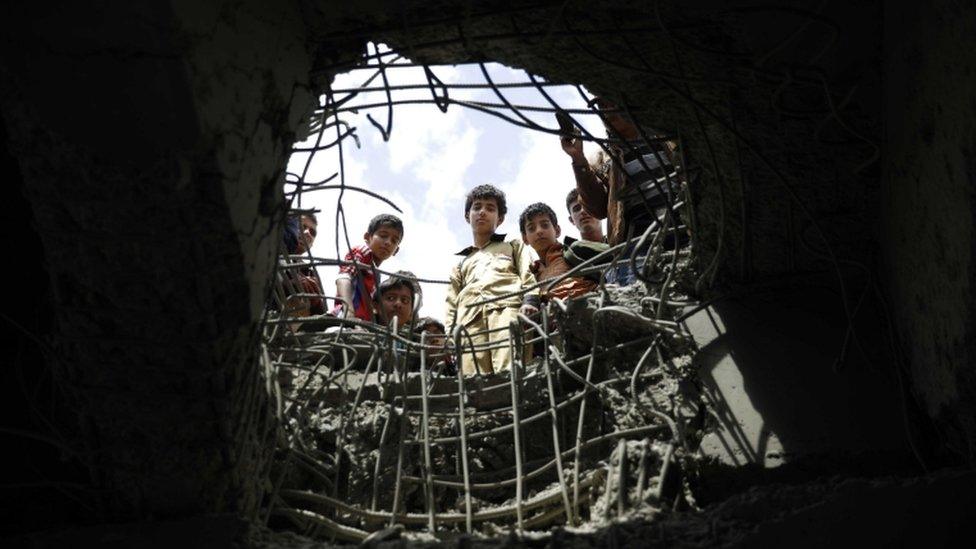
Air strike damage is becoming commonplace in Sanaa
He later escaped and fled the country to neighbouring Saudi Arabia.
Within six months, the Houthis had taken over the whole of western Yemen while the retreating and demoralised government forces abandoned most of the east to al-Qaeda.
The Houthis, who represent only a minority of Yemenis, achieved their lightning success by allying with their former enemy, former President Ali Abdullah Saleh.
Ousted by the Arab Spring protests that began in 2011, Mr Saleh stayed on in Yemen and retained the loyalty of much of the army and security forces.
Despite fighting six inconclusive wars against the Houthis while he was in power, he saw them as his chance to wreck his successor's rule as president, so he effectively put his troops at their disposal.
Overwhelming firepower
The Saudis, already feeling a degree of paranoia at the growing influence across the Arab world of its arch-rival, Iran, became convinced this was all a bid to install an Iranian proxy militia in Yemen.
In March 2015, Saudi Arabia's young and as then untested defence minister convened a hastily put together coalition of Arab air forces. And, on 26 March, the air strikes began.
The Saudis and their principal allies, the United Arab Emirates, may have hoped their overwhelming firepower (the Houthis have no air force) would quickly bomb the rebels back to the negotiating table.
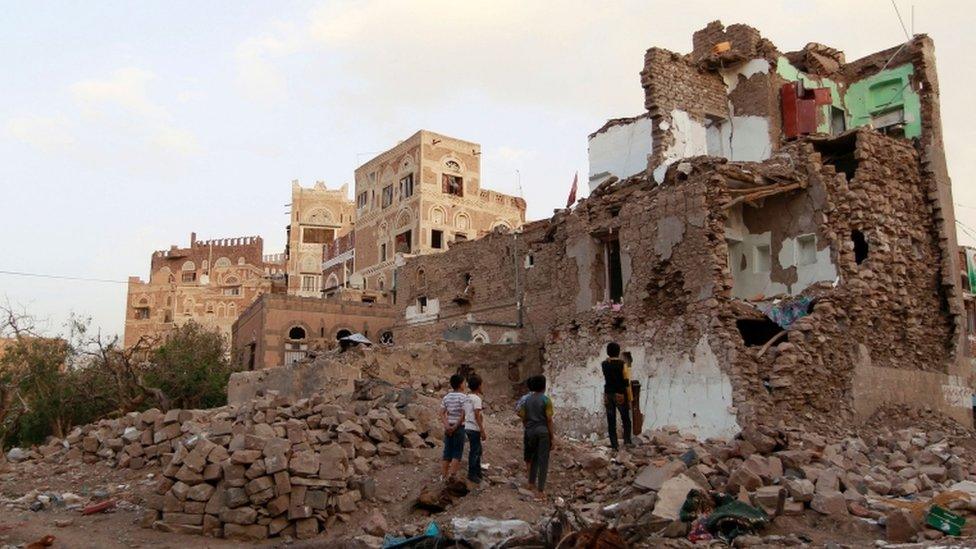
The Unesco-listed old city of Sanaa has been hit
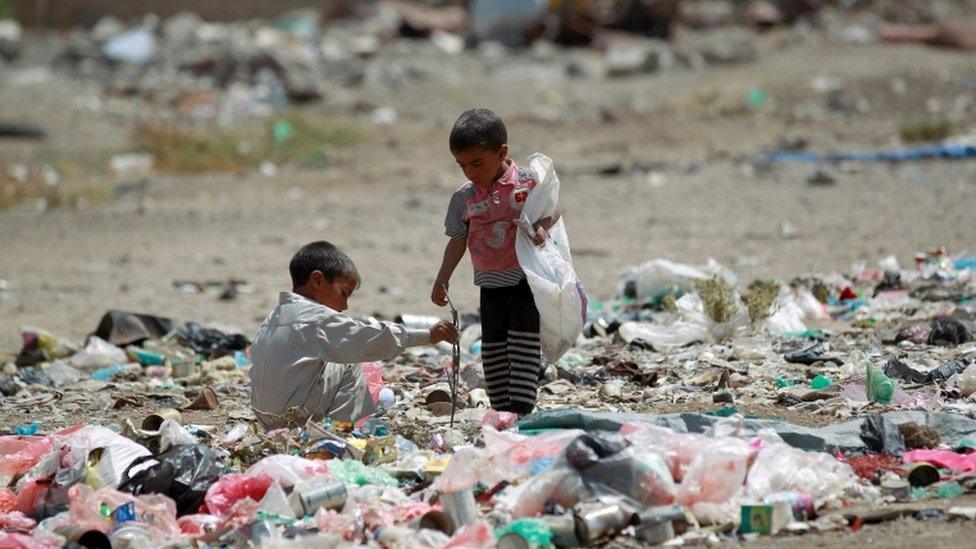
Yemen was the poorest Arab country even before this war began
This has not happened. After 12 months of mounting casualties, the Saudi-led coalition has only a small bridgehead - and a temporary declared capital - in the southern port of Aden.
Yemeni soldiers loyal to President Hadi have been retrained and re-equipped by the Saudis and Emiratis and have been battling the Houthis in the key city of Taizz.
In much of the east of Yemen, law and order has collapsed to be replaced by armed militias, including violent jihadists.
There have been reports, denied by the Saudis, that some Sunni jihadists have joined forces with the Saudi-led coalition to fight the Houthis, who are Shias.
In Europe, there is a growing chorus of opposition to the air strikes, with the European Parliament voting overwhelmingly to call for an arms embargo on Saudi Arabia.
Both the US and UK supply aircraft and weaponry to Saudi Arabia, including the precision-guided Paveway 4 missile.
The Saudi military insists it chooses its targets carefully and that it goes to great lengths to abide by international humanitarian law and the law of armed conflict.
But there have been numerous and well-documented reports of civilians being hit, including, this month, a crowded marketplace near the town of Hajjah, where more than 100 people were killed, external.
No end in sight?
Yemeni government sources say the next round of peace talks will be held in Kuwait, starting on 17 April.
In March, there was a delegation of Houthis in the Saudi capital, Riyadh.
Earlier attempts by Oman to broker a peace deal in Muscat and later talks in Geneva have failed to bridge the gap between the various sides.

There is currently "a cessation of hostilities" with UN-brokered talks on the horizon.
In the past these have quickly broken down and few are holding out high hopes at this stage.
It is often said that wars end when both sides are exhausted and can no longer see an advantage to be gained by fighting on. (This is how the eight-year Iran-Iraq war ended in 1988).
Sadly, Yemen's combatants do not appear to have reached that stage yet.
The Saudis have the money and the firepower to continue the air war, but they are sensitive to mounting international disapproval.

President Hadi was placed under house arrest
The Houthi rebels know any ground offensive to evict them from the capital, Sanaa, would result in a street-to-street bloodbath that would inflict intolerable casualties on any Saudi-led force.
So, for now, Yemen is in a state of semi-stalemate with neither side a clear victor.
Yemeni researcher Nawal Al-Maghafy, who has spent time on the ground witnessing the destruction of her country, believes the war has damaged Yemen beyond repair.
"Put simply," she says, the war is tearing Yemen's social fabric apart.
Today, children are putting down their school bags and picking up guns and rifles instead, in alarming numbers.
Faced with a future without prospects, many are opting to join extremist organisations such as al-Qaeda - or even so-called Islamic State.
Yemen, she adds, is likely to remain highly unstable for years, if not for decades.
- Published2 September 2015

- Published25 September 2015
